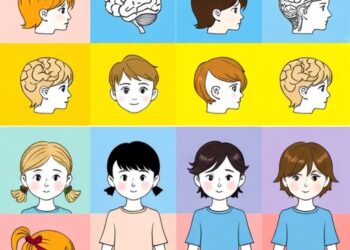The vast majority of American voters think alike on what they find important in life, but both Republicans and Democrats fail to recognise their shared views and values, according to new research from the Universities of Bath and Essex.
The vast majority of American voters think alike on what they find important in life, but both Republicans and Democrats fail to recognise their shared views and values, according to new research from the Universities of Bath and Essex.
This finding is revealed today in the academic journal Social Psychological and Personality Science less than a month after the US Republican presidential nominee Donald Trump survived an assassination attempt when a gunman shot at him during a campaign rally.
“There’s a general perception that Republican and Democratic voters are deeply divided but our new study suggests these differences of opinion between the two groups are greatly exaggerated and that the groups are actually very similar in the values they hold as important,” said author Dr Lukas Wolf from the Department of Psychology at the University of Bath.
Ending despair
In a bid to reduce societal conflict and despair, Dr Wolf and Dr Paul Hanel – a psychologist from the University of Essex – call on journalists and social scientists to dwell less on the differences between Democrats and Republicans, and instead draw attention to the real and substantial similarities in fundamental values between the two groups.
Dr Hanel said: “The deep division between Republican and Democratic voters is talked about widely in the media, resulting in eight out of ten voters from both parties expressing concern about this division and perceiving it to be growing, which is particularly alarming in the run-up to the US election.”
Dr Wolf added: “This perceived polarisation has detrimental consequences because people expect the worst from interactions with the other group and actively avoid them. It also means people become pessimistic about the future because the division in society stands in the way of compromise and cooperation for a better future.
“But when we gave study participants real evidence that they in fact shared many values with the other group, it increased their sense of hope about the future and inspired trust in people they have seen as fundamentally different to them.”
Polling on values
For the new study 2,529 US people (with approximately equal numbers of Democratic and Republican voters) were polled on fundamental values.
The two groups showed 90% agreement on the importance of fundamental values such as helping others or feeling safe. Generally, only 5% of the extreme voters on either side of the political spectrum held different values.
When study participants were shown ‘overlapping distribution’ graphs of their similarities and differences, where the substantial crossover in their values was immediately clear, they felt more hopeful about the future of US society.
This greater hope emerged because upon seeing the overlap, participants felt a deeper connection with voters from the other political camp.
Reactions to overlapping distribution graphs were compared to reactions to barplots or to being given no information. Study participants expressed far more positivity about the future when shown overlapping distributions that emphasised similarities than when shown barplots or no graphs.
“Generally, the media and social scientists compare groups by describing differences, for example by using barplots, which ignore overlap and show exaggerated divisions in US society,” said Dr Wolf.
“We urge these influencers to also describe similarities alongside differences, for example by using graphs such as overlapping distributions, which accurately display both similarities and differences and help to correct misperceptions of deep division in society.”
Journal
Social Psychological and Personality Science
Method of Research
Survey
Subject of Research
People
Article Title
Correcting misperceptions of fundamental differences between US Republicans and Democrats: Some hope-inspiring effects
Article Publication Date
29-Jul-2024




